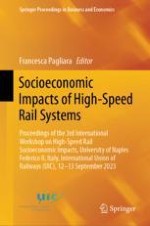This book offers new insights into the wider socio-economic impacts of high-speed rail (HSR). Over the past few decades, significant investments have been made in these systems around the world. The use of public funds for the construction of high-speed rail offers a range of benefits, such as time savings, increased comfort, and reduced traffic congestion, as well as broader economic benefits, including the advancement of less developed regions.
These proceedings feature papers presented at the 3rd International Workshop on the Socioeconomic Impacts of High-Speed Rail. The focus is on HSR impacts on the environment, on the land use system, on investment, on the tourism industry, on inclusion and on cooperation vs integration with other transport modes. The book provides an overview of the current state of practice from both theoretical and empirical perspectives. Consequently, it will be of interest to scholars of transportation economics and related fields, as well as transportation industry professionals.
